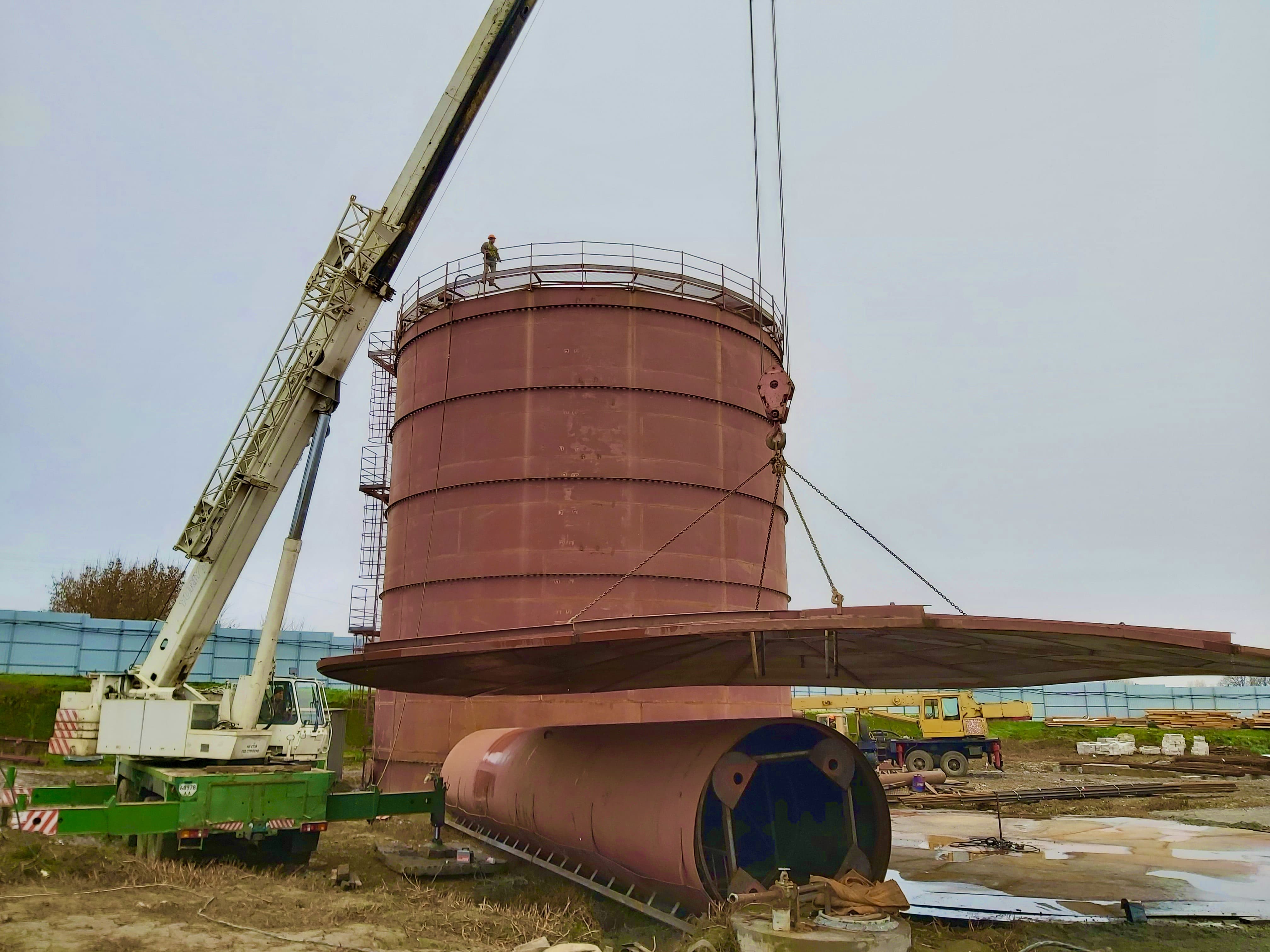1. Improper preparation of the base for the tank
One of the most common mistakes is insufficient or uneven soil compaction, inappropriate brand of concrete for the base slab, or incorrect reinforcement. This leads to distortions of the RVS body and uneven load distribution, which can cause deformations or cracks in the bottom.
How to avoid:
- Use project geodesy and soil compaction control.
- The slab should be made of concrete of class C25/30 or higher with mandatory reinforcement.
- Before installation, be sure to check the surface level using laser levels.
2. Absence or incorrect installation of compensation elements
In oil tanks (PBC-100, PBC-200, PBC-1000) it is extremely important to provide for thermal deformations of the shell and breathing valves. The absence or incorrect operation of breathing devices leads to excessive pressure and, as a result, damage to the shell or welds.
How to avoid:
- Always include a set of valves (breathing, safety, level indicators).
- Install only certified fittings that comply with GOST/DSTU.
- After installation, check the tightness and serviceability of the ventilation system.
3. Violation of welding technology
Haste, low qualifications of welders, or violation of the welding sequence lead to cracks, porosity, and defects that reduce the tightness of the tank.
How to avoid:
- Hire only certified welders with experience working with RVS.
- Apply control methods (ultrasound, X-ray, capillary method) after each stage.
- Carry out welding in weather conditions that meet the standards (no wind, no precipitation).
4. Ignoring corrosion protection after installation
Even if the primary treatment was applied at the factory, without protection from the outside and inside, the PVS quickly loses its service life due to corrosion. This is especially critical for tanks that store aggressive liquids or operate in difficult climatic conditions.
How to avoid:
- Apply sandblasting to Sa2.5 level according to ISO 8501-1.
- Apply polyurethane or epoxy protection systems, taking into account the type of fluid.
- Don't forget to cover the internal seams and the bottom-wall area.
5. Insufficient control of assembly of assemblies and flanges
Often, incorrectly installed or undertightened flange connections become a source of leaks during operation, especially at oil product inlets/outlets.
How to avoid:
- Install only recommended types of seals (e.g., paronite or Teflon).
- Use torque wrenches to tighten the bolts evenly.
- Recheck all components before commissioning.
Result
Proper installation of a steel tank is the key to its long service life, safe operation, and no product loss. By avoiding common mistakes, you not only reduce risks, but also save money on future repairs.
The company "Orient LTD" has many years of experience in the production and installation of RVS-100, RVS-200, RVS-500 and larger tanks. We guarantee quality at every stage: from design to turnkey delivery of the facility.
🔧 Do you need a reliable tank? Contact us - we will find the optimal solution for you.


.svg)





.svg)
.svg)